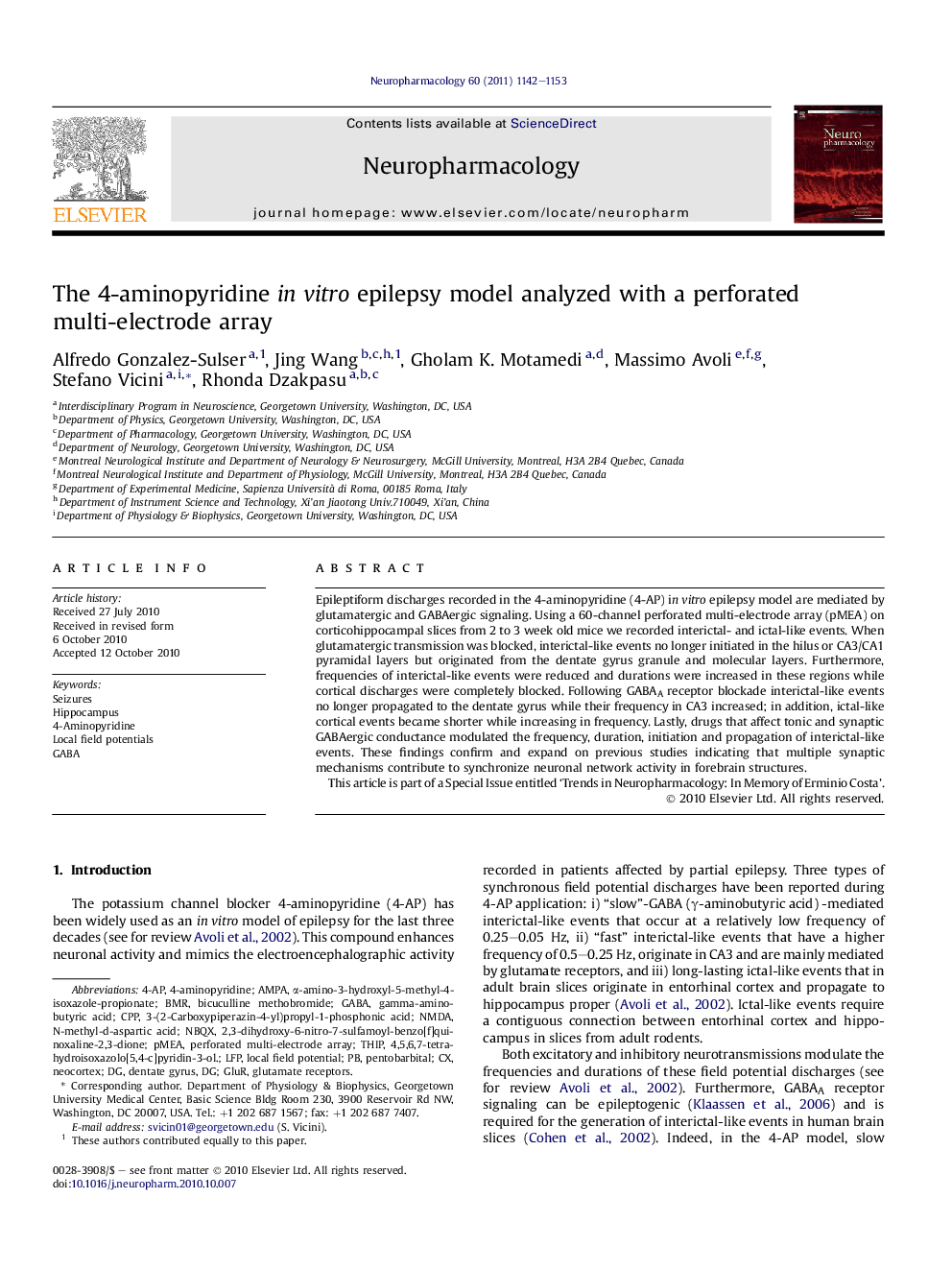| Article ID | Journal | Published Year | Pages | File Type |
|---|---|---|---|---|
| 2493701 | Neuropharmacology | 2011 | 12 Pages |
Epileptiform discharges recorded in the 4-aminopyridine (4-AP) in vitro epilepsy model are mediated by glutamatergic and GABAergic signaling. Using a 60-channel perforated multi-electrode array (pMEA) on corticohippocampal slices from 2 to 3 week old mice we recorded interictal- and ictal-like events. When glutamatergic transmission was blocked, interictal-like events no longer initiated in the hilus or CA3/CA1 pyramidal layers but originated from the dentate gyrus granule and molecular layers. Furthermore, frequencies of interictal-like events were reduced and durations were increased in these regions while cortical discharges were completely blocked. Following GABAA receptor blockade interictal-like events no longer propagated to the dentate gyrus while their frequency in CA3 increased; in addition, ictal-like cortical events became shorter while increasing in frequency. Lastly, drugs that affect tonic and synaptic GABAergic conductance modulated the frequency, duration, initiation and propagation of interictal-like events. These findings confirm and expand on previous studies indicating that multiple synaptic mechanisms contribute to synchronize neuronal network activity in forebrain structures.This article is part of a Special Issue entitled ‘Trends in Neuropharmacology: In Memory of Erminio Costa’.
